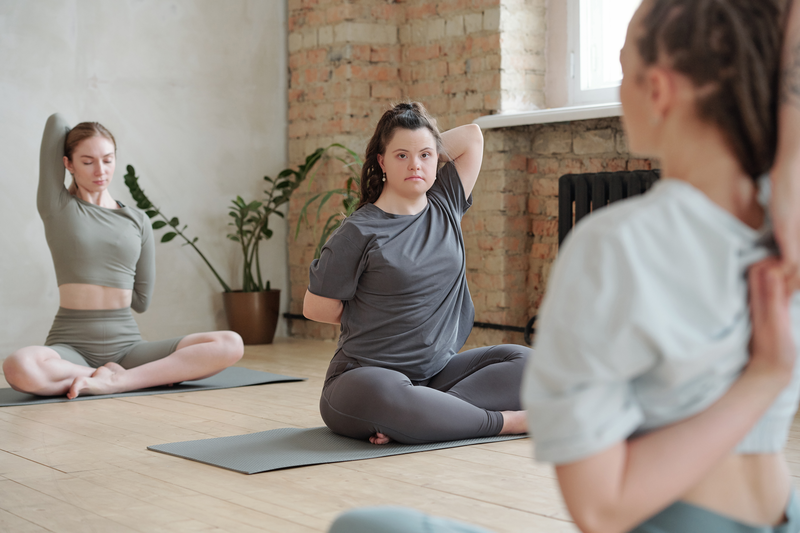
As more research is done on the benefits of mindfulness practices, meditation and yoga, more studies are being focused on the benefits specifically for individuals with disabilities. As more individuals realize the benefits, they may begin searching for teachers who offer adaptations or modifications in the practices they offer in the community. The benefits of including these practices in your life help with improved mental health, reduced stress levels, better physical well-being, flexibility and can be practiced anywhere. As an individual who works in disability advocacy and someone who recently completed 500 hours of yoga teacher training, I have begun my own self-study or “Svadhyaya” into how to make the practices I offer accessible. I was lucky to find Yoga Forward for my first 200 hours of training. Yoga Forward’s mission is to “take yoga where it isn’t,” this philosophy has fostered my interest in continuing to build opportunities for anyone who wants to practice yoga no matter the size, shape or ability of their bodies.
The most important practice in yoga is breathwork, the simple practice of mindful breathing. Since breath is the root of life, beginning with breath is an easy way to make a practice accessible for most. For individuals who have limited sensations or use devices to breathe they may not be able to practice using breath. In those instances, finding a point of focus like a sound, flickering candle or other sensory stimulus may be more appropriate. If your body is able you may want to take a moment to try a simple breath practice of the “physiological sigh” (double inhale, long exhale) that stimulates the phrenic nerve. The physiological sigh is two short inhales followed by a long exhale. It is a natural breath the nervous system does to automatically offload the maximum amount of carbon dioxide. You may notice a similar breath if someone is crying and attempting to calm down. Repeat this process of two short sharp inhales followed by a long exhale 3 to 5 times and you will notice a relaxation in the body.
Moving from simple breath mindfulness to meditation may feel like a big leap. An easy way to offer adaptive meditation is to offer time for individuals to participate in meditation or to have a quiet room or space in a workspace that individuals can access on their breaks or lunchtime. It is important to remember that breathwork, mindfulness, meditation and yoga will all look different in different bodies. There is no right or wrong way to practice. Sometimes it is by trial and error that you find ways that your body prefers to center itself. Doing a simple search online for adapted meditations you will find several resources that may work for your specific disability. Try different methods of meditation such as breathwork, coloring mandalas, creative flow, ecstatic dance, using senses like touch to explore something tactile, audio recordings or scripted meditations, creating and chanting mantras or words of affirmation, forest bathing, or being in nature.
If you are an individual providing meditation practices in the community, work to provide accommodations when requested for ASL (American Sign Language) interpreters, allow various ways to sit or support the body, create practices with more descriptive wording for those that are blind or low vision. And be open to accept input and potential criticism when the practice you provide is not meeting the accessibility standards for individuals wanting to practice.
Yoga may seem like a place where adapting and modifying may not seem as simple or available. I have found that yoga lends itself very well to being modified and adapted. Offering a variety of options for poses that meet varying levels of abilities, body sizes and energy levels is best practice. Individuals could practice from a chair, seated on the floor, or through the movements of the pose as their bodies are able. Offering blocks, bolsters, straps, chairs, or other equipment may also provide accessibility to poses. I recently hosted an adapted practice where we had an ASL interpreter, utilized a slide show that included pictures of poses being done in different ways, and we also utilized the captioning on Google Slides to have live captioning for the event. With a little creativity and input from your students with disabilities it is possible to create a practice where everyone benefits and feels welcome.
Leah Lobato is the Director of the Governor’s Committee on Employment of People with Disabilities and Business Relations with the Utah State Office of Rehabilitation and a recent graduate of 500 hours of yoga teacher training with Yoga Assets. She provides community adaptive yoga practices in her community in Utah.